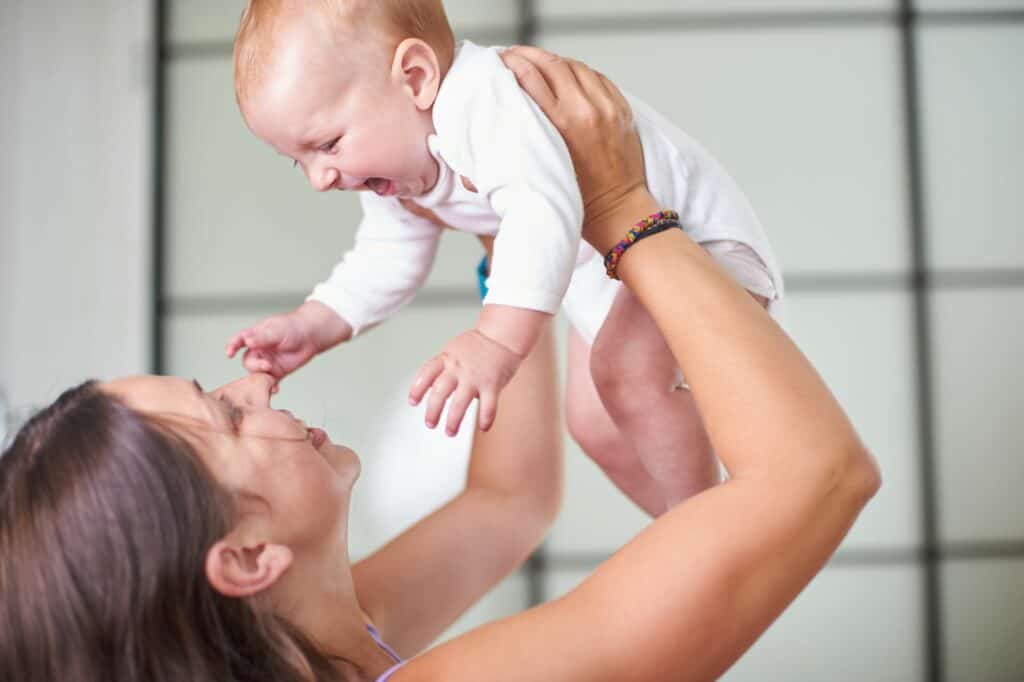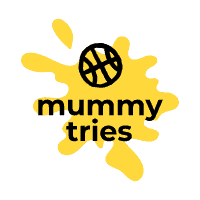Lifting a toddler after c-section is a concern for many new mothers. After undergoing a cesarean delivery, mothers are advised to avoid lifting heavy objects, including their toddlers, for several weeks. This can be a challenging task, especially for moms who have no one to help out with childcare. In this article, we will discuss how to safely lift a toddler after c-section and explore some tips for a smoother recovery.

C-section recovery is a process that takes time and patience. After delivery, a mother’s body needs time to heal, and lifting heavy objects can strain the incision site, leading to complications. Doctors usually recommend that mothers avoid lifting anything heavier than their baby for the first few weeks after delivery. This includes toddlers, who can weigh up to 40 pounds. It is essential to follow these guidelines to avoid complications and ensure a smooth recovery.
Key Takeaways
- C-section recovery is a process that takes time and patience.
- Mothers are advised to avoid lifting heavy objects, including toddlers, for several weeks after delivery.
- Following lifting restrictions is essential to avoid complications and ensure a smooth recovery.
Understanding C-Section Recovery
Recovering from a C-section can be a challenging and lengthy process. It’s important for new mothers to understand what to expect during their recovery period to ensure a smooth and successful healing process. This section will cover the recovery timeline, physical limitations, and signs of complications that new mothers should be aware of.
Recovery Timeline
The recovery timeline for a C-section can vary from person to person. Generally, it takes around 6-8 weeks to fully recover from a C-section. During this time, it’s important for new mothers to rest as much as possible and avoid any strenuous physical activity.
In the first week after the surgery, new mothers will experience pain and discomfort around the incision area. Pain medication will be prescribed to help manage the pain. By the second week, the pain should start to subside, and the incision will begin to heal.
By the third week, new mothers may start to feel more like themselves again, but it’s important to continue to take it easy and avoid any heavy lifting or strenuous activity. By the fourth week, new mothers may be able to resume some of their normal activities, but should still avoid any heavy lifting or strenuous activity.
Physical Limitations
New mothers who have had a C-section will have physical limitations during their recovery period. These limitations are in place to ensure that the incision area heals properly and to prevent any complications from arising.
One of the main physical limitations is lifting. New mothers should avoid lifting anything heavier than their baby for the first few weeks after the surgery. This means that they may need to enlist the help of family and friends to care for their toddler during this time.
Other physical limitations include avoiding any strenuous physical activity, such as exercise, for at least six weeks after the surgery. It’s also important to avoid any activities that could put strain on the incision area, such as bending or twisting.
Signs of Complications
While complications after a C-section are rare, it’s important for new mothers to be aware of the signs of complications. Signs of infection include fever, chills, and redness or swelling around the incision area. If any of these symptoms are present, it’s important to contact a healthcare provider immediately.
Other signs of complications include excessive bleeding, severe pain, and difficulty breathing. If any of these symptoms are present, it’s important to seek medical attention right away.
By understanding the recovery timeline, physical limitations, and signs of complications, new mothers can ensure a successful and smooth recovery from a C-section. It’s important to follow all post-operative instructions provided by healthcare providers to ensure a full recovery.
Self-Care and Support Systems
Recovering from a C-section can be a challenging experience, especially when there is a toddler to take care of. It is crucial to prioritize self-care and have a strong support system in place. In this section, we will discuss the role of support networks and professional postpartum help.
The Role of Support Networks
Having a strong support system can make a significant difference in a postpartum mother’s recovery. Family and friends can provide much-needed rest and assistance with household chores and caring for the toddler. It is essential to communicate your needs and limitations to your support system, so they can provide the right kind of help.
Rest is a crucial aspect of self-care, and support networks can help ensure that the mother gets enough rest. They can take care of the toddler while the mother takes a nap or rests. It is essential to prioritize rest and not push oneself too hard, as it can lead to slower recovery.
Professional Postpartum Help
Postpartum doulas are trained professionals who provide physical, emotional, and informational support to new mothers and their families. They can assist with household tasks, caring for the toddler, and breastfeeding support. Postpartum doulas can be hired for a few hours a day or overnight, depending on the mother’s needs.
Professional postpartum help can be especially beneficial for mothers who do not have a strong support system or have limited access to family and friends. It can also be helpful for mothers who need specialized support, such as those with postpartum depression or anxiety.
In summary, self-care and support systems are crucial for a postpartum mother’s recovery, especially after a C-section. Having a strong support network and professional postpartum help can make a significant difference in the mother’s physical and emotional well-being. Prioritizing rest, communicating needs, and seeking help when needed are essential aspects of self-care.
Managing Toddler Care Post-C-Section
After a C-section, taking care of a toddler can be challenging. The incision site can cause discomfort and pain, making it difficult for mothers to lift their toddlers or perform other activities. In this section, we will discuss some safe lifting techniques and how to create a toddler care plan to ensure a smooth recovery.
Safe Lifting Techniques
Mothers who have undergone a C-section should avoid lifting heavy objects or toddlers for at least 6-8 weeks post-surgery. However, if lifting is necessary, it is essential to follow safe lifting techniques to avoid straining the incision site.
Mothers should bend their knees and keep their back straight while lifting their toddler. They should avoid twisting their body and instead pivot their feet to change directions. Using a baby carrier or sling can also help distribute the weight evenly, reducing the strain on the incision site.
Creating a Toddler Care Plan
Welcoming a new baby into the family while recovering from a C-section can be overwhelming. It is essential to create a toddler care plan to ensure the mother gets enough rest and the toddler’s needs are met.
Mothers can ask for help from family members, friends, or hire a postpartum doula to assist with toddler care. Creating a schedule for meals, nap times, and playtime can also help manage the toddler’s routine. Mothers can also engage their toddler in quiet activities like reading or coloring to reduce the need for physical activity.
In addition, mothers can position their toddler in a way that reduces the strain on the incision site. For example, they can sit on a chair or sofa and have their toddler sit on their lap facing them. This position allows the mother to support the toddler’s weight and avoid lifting them.
In conclusion, managing toddler care post-C-section requires mothers to follow safe lifting techniques and create a toddler care plan. Mothers should avoid lifting heavy objects or toddlers and instead pivot their feet to change directions. Creating a schedule for meals, nap times, and playtime can help manage the toddler’s routine. Mothers can also position their toddler in a way that reduces the strain on the incision site.
Breastfeeding After Cesarean Delivery
Breastfeeding after a c-section delivery can be challenging, but it is possible. In most cases, mothers can start breastfeeding soon after the surgery, and sometimes even while still in the operating room. However, there are a few things to keep in mind to make the process more comfortable and successful.
Comfortable Nursing Positions
Finding a comfortable nursing position is crucial for mothers recovering from a c-section. Lying on the side, with the baby facing the mother, is a popular position. This position is comfortable for mothers who want to avoid putting pressure on their incision site. The football hold, where the baby’s legs are tucked under the mother’s arm, can also be a comfortable position for mothers recovering from a c-section.
Using Breastfeeding Aids
Using breastfeeding aids, such as a nursing pillow or a breastfeeding cushion, can make the process more comfortable for both the mother and the baby. A nursing pillow can help support the baby’s weight, allowing the mother to relax her arms and shoulders. It can also help position the baby in the right place for a good latch. A breastfeeding cushion can be used to support the mother’s incision site, reducing the pressure on the area.
Mothers should also make sure they have a good latch, as this can prevent nipple soreness and discomfort. They can try different positions and techniques until they find the one that works best for them and their baby.
In conclusion, breastfeeding after a c-section delivery can be challenging, but with the right techniques and support, mothers can successfully nurse their newborns. Finding a comfortable nursing position and using breastfeeding aids can make the process more comfortable for both the mother and the baby.
Physical Recovery and Activity Resumption

After a C-section, it is essential to take the time to recover and allow the body to heal. Recovery times vary from person to person, but it usually takes 6-8 weeks to recover fully. During this time, it is essential to avoid any heavy lifting or strenuous activities, including lifting a toddler.
Post-Surgery Exercise and Movement
It is crucial to start moving as soon as possible after surgery to prevent blood clots and encourage healing. Initially, this may be limited to short walks around the house. Gradually, the walks can be extended, and light exercises can be added, such as pelvic tilts and gentle stretches. However, it is essential to avoid any exercises that put strain on the abdominal muscles, such as sit-ups or crunches, until after the recovery period.
When to Resume Sexual Activity
It is recommended to wait until after the six-week postpartum checkup before resuming sexual activity. However, this can vary depending on individual recovery and doctor’s recommendations. It is essential to listen to the body and avoid any activities that cause discomfort or pain.
In addition to exercise and sexual activity, it is crucial to take care of the pelvic floor muscles. These muscles support the bladder, uterus, and rectum and can be weakened during pregnancy and childbirth. A pelvic floor physical therapist can provide exercises to strengthen these muscles and prevent bladder or bowel incontinence.
Yoga can also be a helpful tool in recovering from a C-section. Gentle yoga poses can help with flexibility, balance, and relaxation. However, it is essential to avoid any poses that put strain on the abdominal muscles, such as backbends or twists, until after the recovery period.
Overall, it is crucial to listen to the body and take the time to recover fully after a C-section. Gradually adding exercises and activities can help with recovery and prevent future complications.
Frequently Asked Questions

When is it safe to start lifting my child after a C-section?
New mothers are advised to avoid lifting anything heavier than their baby for the first few weeks after a C-section. According to Kidsly Mom, it is generally safe to lift a toddler after a C-section once the incision has fully healed, which can take anywhere from 6-8 weeks. However, it’s important to listen to your body and avoid overexerting yourself.
What are the weight restrictions following a C-section delivery?
There are no specific weight restrictions following a C-section delivery. However, it’s important to avoid lifting anything heavier than your baby for the first few weeks. According to Very Anxious Mommy, new mothers should gradually increase the weight they lift as they continue to heal.
How can I safely pick up my toddler from a crib post-C-section?
To safely pick up your toddler from a crib post-C-section, it’s important to avoid twisting your torso or bending at the waist. Instead, Hello Postpartum recommends standing close to the crib and bending your knees while keeping your back straight. Hold your toddler close to your body and use your legs to lift yourself up.
What are the signs that I’m overexerting myself after childbirth?
Some signs that you may be overexerting yourself after childbirth include increased pain, bleeding, or swelling, as well as fatigue and difficulty breathing. If you experience any of these symptoms, it’s important to take a break and rest.
Are there any risks associated with lifting too soon after a C-section?
Lifting too soon after a C-section can increase the risk of tearing or reopening the incision, as well as causing additional pain and discomfort. It’s important to follow your doctor’s recommendations and avoid lifting anything heavier than your baby for the first few weeks.
How long should I wait before carrying heavy items postpartum?
According to Mama After Baby, new mothers should avoid carrying anything heavier than their baby for the first few weeks after a C-section. It’s important to gradually increase the weight you lift as you continue to heal, and to avoid lifting anything heavy until your doctor gives you the green light.

My name is Laura, and as a mother of two, I understand firsthand the joys and challenges of raising a child. That’s why I created this website, to provide a comprehensive and trustworthy source of information and support for new and expectant parents.

